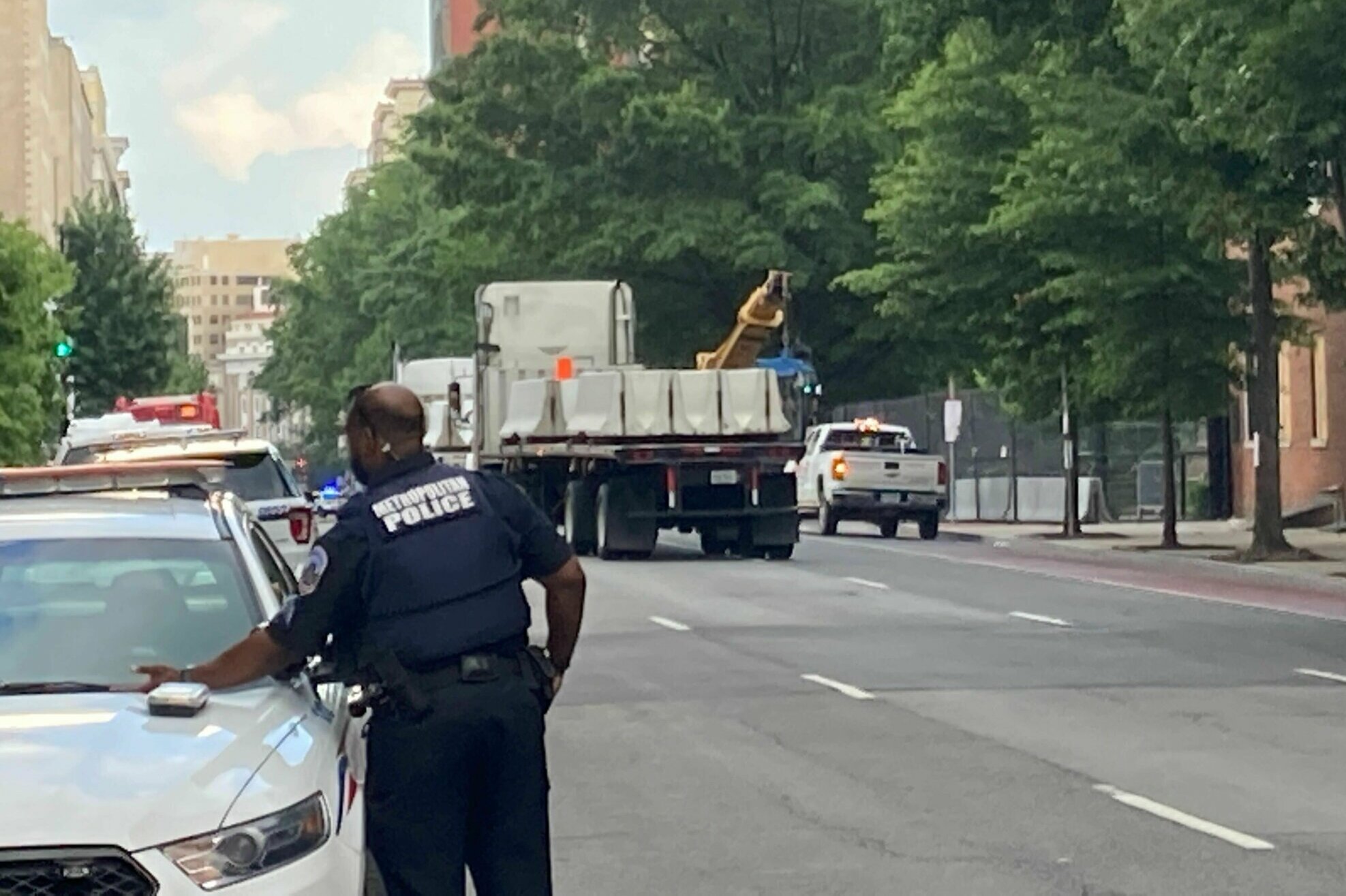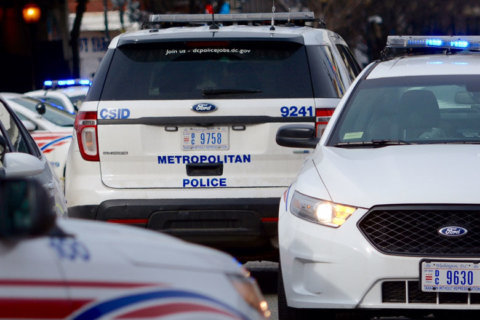
The fencing in Lafayette Square that was taken down after the height of protests in D.C. following the killing of George Floyd has been replaced after a failed attempt to topple a statue of Andrew Jackson.
Much of what is now known as Black Lives Matter Plaza was closed to the public on Tuesday as work crews reinstalled the eight-foot-tall fence less than two weeks after its removal.
St. John’s Church was also enclosed in fencing days after the acronym “BHAZ” was spray-painted on its front columns amid flaring tensions with police, standing for “Black House Autonomous Zone” — referencing a police-free space sought by protesters in Seattle’s Capitol Hill neighborhood.
Protesters placed ropes and chains on an equestrian statue of Andrew Jackson in the middle of Lafayette Square on Monday night, but they were stopped by law enforcement before they could topple the statue.
“Lafayette Park will be closed while the NPS assesses damage and begins to make repairs to statues and other park resources,” National Park Service spokesman Katie Liming said in a statement.
D.C. police allowed protesters to re-enter the area of 16th and H streets early Wednesday morning after a daylong closure while the new fencing was erected.
After a sparse crowd attempted to reestablish makeshift barricades in the street, police again surged into the area and used force — including chemical irritants and stun grenades — to disperse those who remained around 2 a.m. Wednesday.
A group of protesters had earlier headed to Lincoln Park in Capitol Hill, where the Emancipation Memorial stands. It depicts a picture of President Abraham Lincoln “holding the Emancipation Proclamation before a kneeling African American man,” according to the National Park Service website.
At the site of a protest at Lincoln Park in the Capitol Hill neighborhood where some aren’t happy with this statue that shows Lincoln standing over a freed slave #dcprotest #dcprotests pic.twitter.com/rDVhfw36uL
— Ken Duffy (@KenDuffyNews) June 23, 2020
D.C. Del. Eleanor Holmes Norton said she plans to introduce legislation to remove the Emancipation Memorial from Lincoln Park. She said the statue, which is nearly 150 years old, is “problematic” and needs to be taken down.
There were several law enforcement officers at Lincoln Park on Tuesday night.
Turned around and seeing 30 or so MPD & Park Police officers positioned off to the side at this Lincoln Park rally #dcprotest #dcprotests pic.twitter.com/e4KQKp6Pgp
— Ken Duffy (@KenDuffyNews) June 23, 2020
Glen Foster led the protest to Lincoln Park, and he said the statue represents something that is not the embodiment of the American dream.
Foster said the statue carries the message that “our freedom and liberation are only given by way of white people.”
Lincoln looking down at black people “relegates us to being second-class citizens; that not right,” Foster said.
In order to move forward, the statue needs to be taken down, and Foster said that protesters will be demonstrating daily.
“And we’re not going to be here for feel-good marches or peaceful chants; we’re going to be here for change by any means necessary.”
Elsewhere, visitors to the Lafayette Square area Tuesday also panned the statue removal effort, The Associated Press reported.
Wenola Wade, a white resident of the District of Columbia, said she is frustrated that “we’re not far enough along” in dealing with systemic racism but added that “we can’t take down every single statue. That’s stupid.”
“To me, that takes away from what the real message is,” said Wade, 75, who was walking near Lafayette Square around midday hoping to see some of the protesters’ posters.
Daryl Colter, an African American who lives in a Maryland suburb, brought his 5-year-old daughter to a street near the White House that the city has renamed as Black Lives Matter Plaza as an educational moment.
He said he wants leaders from the government and the protest movement to get together and have discussions about the Jackson statue and others, but “you can’t just go around taking it into your own hands and just tear something down.”
“Defacing, tearing it down, it’s going against the cause,” Colter said.
American University history professor Alan Kraut said he and some of his colleagues have used the statues as teaching tools but that a more appropriate question amid the renewed scrutiny is whether their physical destruction makes society better.
“Do you enrich society and social opportunity and social justice by tearing down these statues or is this just a feel-good moment?” Kraut asked.
Meanwhile, President Donald Trump promised executive action to protect monuments after some statues of Confederates and other historical figures with checkered life stories were angrily brought down from parks and other places of public prominence.
Trump said he wants the maximum punishment available under federal law — up to a decade in prison — for those who destroy or tamper with statues on public property that commemorate anyone who served in the U.S. military. He said the executive order would “reinforce” existing law.
“We are looking at long-term jail sentences for these vandals and these hoodlums and these anarchists and agitators,” Trump said, referring to protesters who have vented their anger over racial injustice by toppling statues of figures tied to America’s racist history.
WTOP’s Alejandro Alvarez, Ken Duffy, Mitchell Miller and The Associated Press contributed to this report.








